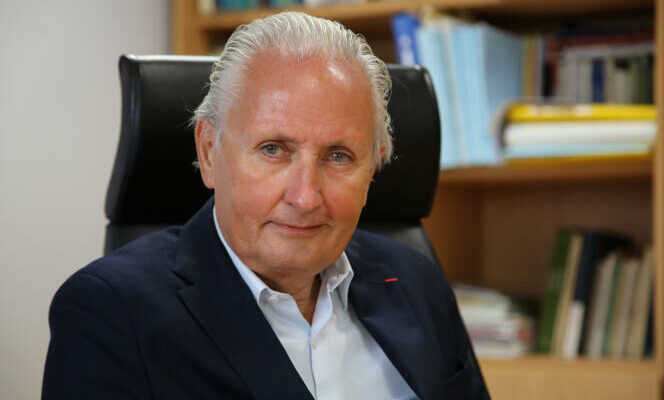Xavier Laqueille is a psychiatrist and head of the addiction department at the Sainte-Anne psychiatric center in Paris. He deplores that, since the ban on hexahydrocannabinol (HHC) in June 2023, synthetic cannabis derivatives with the same psychoactive effects (THCPO, H4CBD, THCV) have thrived in regulatory vagueness. And warns of the dangers for the unwary consumer.
What are these new molecules sold in CBD stores that circumvent HHC regulations?
Synthetic cannabinoids are molecules produced in the laboratory that mimic the effects of THC, the main psychoactive component of cannabis, on brain receptors, with very variable results. HHC, for example, is a synthetic molecule made from hydrogenated THC. Since its ban in France, new molecules have appeared, which are slightly derived. In other words, we simply added a few atoms to the molecule. This is why we end up with different product names that have the same psychoactive effects, sold legally in stores that distribute CBD. And because the classification is done molecule by molecule and not by family of molecules, the authorities are still racing to ban them.
How are these synthetic neocannabinoids obtained?
Some derivatives are 100% synthesized in the laboratory, others are of semi-synthetic origin: we take a natural substance present in hemp and we modify it, as was the case with hydrogenated THC to make HHC. Ultimately, we are just reproducing the story of drugs: synthesized natural substances that mimic effects on brain receptors. With the sole exception that neocannabinoids do not pass through the legal and regulated drug circuit. We are swimming in the middle of a gray area.
Are synthetic derivatives more potent than cannabis?
What characterizes them is precisely that they are more powerful than THC. THC is a molecule which has a long elimination half-life – approximately twenty-eight days in the body – because it binds significantly to lipids and fats, particularly in the brain, with significant release phenomena in the organism. A user who inhales cannabis on a regular basis will still have traces of THC in the body for up to a month after taking it. Neocannabinoids have a shorter elimination half-life, but much stronger effects.
You have 58.76% of this article left to read. The rest is reserved for subscribers.
